We understand that staying effective on Instagram has become a real challenge. The platform moves fast, and the pressure to perform is constant. Marketers are expected to create, manage, and grow all at once, often without the right tools to support that work. Many still rely on whatever is familiar, even if it no longer gets results. That’s why we put together this list: to help marketers find the right tools to support them at every stage.
If you're using Instagram to grow a brand, run campaigns, or manage creators, you're probably already juggling a handful of different tools. Whether it be analytics dashboards or publishing platforms, Instagram’s ecosystem has become too big to manage with just the app itself. The good news is that there are tools for nearly every task. The best ones can save you time, improve results, and help you understand what’s working for the future.
In this guide, we’re sharing 20 of the best Instagram tools to use in 2025. We've grouped them into four categories to make things easier: analytics tools, schedulers, hashtag tracking tools, and social listening platforms. Whether you’re part of a marketing team, running your own business, or building a creator career, there’s something here to sharpen your workflow.
But before we get to the list, let’s go over what these tools actually do and why different teams rely on them.
What are Instagram tools?
Instagram tools are third-party platforms designed to help you get more out of Instagram. While the app itself offers some features for business accounts, such as insights or scheduling posts through Meta Business Suite, many marketers, creators, and agencies need more power, better data, and greater flexibility. That’s where these tools come in.
There are several types of Instagram tools, each built for a specific purpose. Here are some of the most common:
Analytics tools help you measure account performance, track follower growth, and understand how your content is performing over time. They can also surface insights about your audience, top-performing posts, and engagement trends. These are key for planning better content and reporting results.
Schedulers let you plan and automate posts, stories, and reels. Instead of manually publishing at specific times, you can batch content, preview your grid, and post automatically. Some tools also include recommendations for the best time to post based on audience data.
Hashtag tracking tools monitor hashtag performance so you can see which ones are helping your content reach new users. They often include data on post volume, engagement, and trends over time. This is useful for both organic reach and content planning.
Social listening tools track mentions, comments, and keywords across Instagram and other platforms. They are ideal for brand monitoring, sentiment analysis, competitor research, and identifying trending conversations.
Beyond those, there are plenty of other Instagram tools out there. Some help you create better content with templates or editing features. Others focus on paid ads, campaign tracking, link-in-bio pages, or influencer partnerships. We’re not covering those here, but it helps to know what else exists.
Ultimately, the tools you choose will depend on your goals. If you want better reporting, there are tools for that. If you need to stay organised or post across time zones, there are tools for that too. The next sections will break down some of the best options in each category.
Instagram analytics tools
1. HypeAuditor

HypeAuditor is a dedicated analytics platform built for influencer marketing teams that need deeper insights into audience quality and campaign performance. It helps brands and agencies evaluate Instagram accounts at scale, with tools to detect fake followers, monitor engagement, and track how influencers perform over time.
Beyond its paid analytics suite, HypeAuditor also offers several free tools that are great for teams just getting started or evaluating creators before a partnership. The Instagram Reels Analyzer gives a snapshot of how well individual Reels are doing, showing likes, comments, and engagement rate. You can also check the authenticity of an account with the Fake Follower Checker or use the Instagram Audit Tool for a more complete view of audience quality and post interaction.
Another helpful feature is the EMV calculator, which estimates the Earned Media Value of influencer content. For more detailed data, HypeAuditor’s paid reports unlock historical trends, audience demographics, and campaign-level tracking, making it a strong option for teams that want to scale or optimise influencer programs.
Key features:
Free tools to check content performance and audience credibility
Instagram Audit to assess engagement and spot suspicious activity
EMV calculator for evaluating campaign value
Detailed reports on influencer performance and audience makeup
2. Sprout Social

Sprout Social offers a streamlined way to track Instagram performance alongside other social platforms. It includes all the essential metrics (reach, impressions, engagement, and audience growth) but also gives users more flexibility when it comes to reporting and data presentation.
You can build and customise reports to suit your team’s needs, which is useful when presenting results to clients or internal stakeholders. Although Sprout is a cross-channel platform, the Instagram-specific insights are detailed enough for deep analysis, making it a solid choice for mid-sized teams and agencies.
Key features:
Full analytics on engagement, reach, and growth
Report builder with flexible formatting for stakeholders
3. Metricool

Metricool is a practical, all-in-one tool that combines Instagram analytics with scheduling and monitoring. It gives users a clear view of how posts are performing over time, including metrics for reach, engagement rate, and follower growth. Everything is laid out in a way that’s easy to understand, even if you’re managing multiple platforms.
You’ll also find features for hashtag performance and competitor tracking, so you can keep an eye on how you stack up. The interface is especially user-friendly, which makes it a great fit for freelancers or smaller teams managing day-to-day content.
Key features:
Visual reporting for growth and engagement metrics
Tools for hashtag analysis and benchmarking
4. Emplifi

Emplifi’s analytics tools are built for teams that need a more strategic view of Instagram. It supports cross-account tracking and lets you review branded content performance in detail. You can compare your results against competitors, view insights across multiple markets, and monitor both paid and organic campaigns.
For brands working with creators, Emplifi also provides influencer tracking and audience breakdowns. These features are especially useful if you’re managing long-term campaigns or reporting across multiple regions.
Key features:
Cross-account analytics with campaign-level tracking
Audience insights and competitive benchmarking
5. Socialinsider

Socialinsider is an analytics platform made for teams that want to understand content performance more deeply. It tracks all the standard Instagram metrics, such as reach, impressions, and engagement, but also breaks them down by content format. You could be publishing Reels, Stories, carousels, or videos; you’ll see how each one contributes to growth and interaction.
The tool also makes it easy to compare your performance against competitors or industry norms. These benchmarking features are especially useful if you’re looking to back up your strategy with external data or report to stakeholders.
Key features:
Insights by content type, including Reels and Stories
Competitive and industry benchmarking tools
Instagram schedulers
6. Later

Later is a visually focused scheduling tool designed to make content planning feel simple and organised. Originally built for Instagram, it still shines when it comes to managing visual consistency and planning ahead. You can schedule posts, Stories, and Reels using a drag-and-drop calendar and preview how your grid will look before publishing.
The platform includes a media library where you can upload and reuse assets, along with saved caption and hashtag templates to keep your workflow consistent. Its clean layout and intuitive interface make it a popular choice for small teams and individual creators.
Key features:
Feed planner with drag-and-drop scheduling
Reels, Story, and post scheduling with reusable media and captions
7. Buffer

Buffer offers a clean, no-fuss way to schedule Instagram content. It supports posting for business accounts, including single images, carousels, and video. You can create and adjust your content inside a simple calendar view, making it easy to stay on track with regular posting.
It also provides basic analytics for each post, including data on reach, likes, comments, and overall engagement. While it doesn’t have a visual planner like some other platforms, Buffer performs well as a lightweight tool that gets the essentials right.
Key features:
Simple scheduling for posts, videos, and carousels
Engagement and reach metrics are included in the dashboard
8. Hootsuite

Hootsuite is one of the most established platforms for managing social content, and it includes solid scheduling tools for Instagram. You can queue up Reels, Stories, and standard posts across multiple accounts. The dashboard gives you a full overview of your publishing schedule and upcoming campaigns.
Team features are where Hootsuite stands out. It supports approval workflows, user roles, and shared access for collaboration. Post previews and performance analytics are also included, making it well-suited for agencies or larger teams working across clients or regions.
Key features:
Scheduling across multiple Instagram accounts
Built-in tools for approvals, collaboration, and campaign tracking
9. SocialPilot

SocialPilot is designed for efficient content planning, especially for those juggling several accounts. It includes bulk scheduling options and direct support for Instagram Reels. The interface is simple and streamlined, making it easy to upload content and manage your calendar.
It also includes tools for managing clients, such as access controls and approval flows. This makes it a good fit for agencies that need to keep client content moving without confusion. Analytics and post insights are also built into the platform.
Key features:
Bulk post scheduling and Reel publishing
Client management features with approval flows
10. Planable

Planable puts collaboration front and centre. It’s built for teams who want to draft, edit, approve, and schedule content together without leaving the platform. Instagram posts can be planned visually using a calendar or feed view, and every step of the process, from writing to feedback, happens inside the tool.
It’s especially useful for agencies or internal teams who want to avoid long email chains or side chats. Planable keeps your Instagram content organised, visible, and easy to approve.
Key features:
Visual post planning with collaborative editing
Internal workflows for feedback and approval
Instagram hashtag tracking tools
11. BrandMentions

BrandMentions includes a Hashtag Tracker that pulls in hashtag activity from Instagram, Facebook, and X into one central dashboard. This gives you a broader picture of how your hashtags are performing across multiple platforms. You’ll also receive real-time alerts whenever a new mention or link is detected, so you can stay updated on campaign impact as it happens.
The tool also allows you to search any hashtag, brand, or competitor to understand audience engagement and reach. These insights can help shape your strategy, compare performance, or fine-tune messaging based on current conversations.
Key features:
Cross-platform hashtag tracking from Instagram, X, and Facebook
Instant notifications for new mentions and links
12. StarNgage

StarNgage provides a free Instagram hashtag tracking tool designed to support influencer and campaign planning. You can search any hashtag and see real-time analytics, including the number of posts using that tag and how well they’re performing in terms of likes and comments.
This makes it easier to judge which hashtags are delivering strong results before or after a campaign. The tool also generates relevant hashtag suggestions and can be used for light competitor research, useful for discovering content trends without having to search manually.
Key features:
Real-time data for any Instagram hashtag
Metrics on post volume, likes, and comments
13. Agorapulse

Agorapulse is known for its all-in-one social media features, and it includes built-in hashtag monitoring. You can run searches across multiple hashtags at once and filter results by language or location, which is especially helpful for region-specific campaigns.
One handy detail is that Agorapulse shows you exactly which accounts are using a tracked hashtag, making it easier to understand who’s driving engagement and whether the content aligns with your goals.
Key features:
Advanced hashtag search filters including language and location
Links hashtag activity to individual user profiles
14. Iconosquare
![]()
Iconosquare offers detailed hashtag tracking tailored to Instagram and Facebook. The platform tracks how many times a hashtag has been used in posts over the past 30 days, breaking down the frequency, engagement, and post format, whether it’s photos, videos, or carousels.
It also highlights the top 10 posts tied to each hashtag, giving you a quick look at the content that’s performing best. These insights are useful for spotting what types of posts resonate and which hashtags are worth repeating.
Key features:
Tracks post frequency and format by hashtag
Shows top-performing media using each tracked tag
15. Keyhole

Keyhole helps you monitor Instagram hashtags in real time, with live data on reach, impressions, and engagement. It’s built for fast insights, so you can quickly measure how your hashtags are performing and adapt if needed. It also supports historical tracking, letting you go back and evaluate long-term performance.
The interface is simple and easy to navigate, which makes it a practical option even for teams that aren’t deep into analytics. You can also see which influencers or accounts are driving the most engagement under a hashtag, making it easier to connect with potential partners.
Key features:
Real-time and historical tracking of hashtag performance
Engagement, reach, and influencer insights
Instagram social listening tools
16. Brandwatch

Brandwatch is a high-level social listening platform designed for brands that want to go beyond basic mentions. It gathers data from a huge range of sources, including social media, blogs, forums, and news sites, helping teams monitor conversations, track sentiment shifts, and understand how people are talking about their brand over time.
What sets Brandwatch apart is its use of AI to analyse emotion and intent behind posts, giving you more than just surface-level stats. Its flexible dashboards make it easy to track performance, spot patterns, and compare brand activity across different periods. It’s a strong choice for companies focused on long-term insights, strategic planning, or reputation management.
Key features:
AI-powered sentiment and emotion analysis
Access to real-time and historical data from social and web sources
Custom dashboards for in-depth brand tracking
17. Talkwalker

Talkwalker provides extensive social listening features, with support for text, audio, and image-based content. It collects data from a wide range of sources – not just social platforms, but also podcasts, blogs, and visual media. This makes it a great fit for brands that want to track their presence across different content formats and regions.
The platform also includes predictive analytics to help spot trends before they take off, which can be useful for campaign planning or staying ahead of competitors. With support for over 150 languages, Talkwalker works well for international teams monitoring multiple markets at once.
Key features:
Tracks visual and written content, including image-based logo mentions
Predictive trend detection using AI
Multi-language support for global monitoring
18. Meltwater

Meltwater brings together social media monitoring and traditional media analysis in one tool. It covers everything from social chatter to news mentions, helping PR and marketing teams work from a shared view of brand visibility. The platform makes it easy to follow public conversations and media coverage side by side, which is useful for identifying shifts in tone or attention.
Custom dashboards and real-time alerts help teams respond quickly to emerging stories or sentiment spikes. For companies managing both communications and social engagement, Meltwater offers a practical way to keep both in sync.
Key features:
Combined tracking across news, blogs, and social platforms
Alerts and dashboards for live conversation monitoring
Market and competitor trend insights
19. Mentionlytics

Mentionlytics is a smart, AI-supported tool that monitors brand mentions across social media and the web. It’s designed to give businesses a clear view of how they’re being talked about and includes sentiment tracking, influencer discovery, and actionable tips via its built-in assistant, the Social Intelligence Advisor (SIA).
Coverage includes platforms like Instagram, TikTok, and X, so you get a full picture of your brand’s digital footprint. The interface is accessible and works well for small and mid-sized teams looking for strategic recommendations without needing a dedicated analyst.
Key features:
AI-powered advisor for insights and suggestions
Real-time brand tracking across multiple platforms
Tools for sentiment and influencer analysis
20. Awario
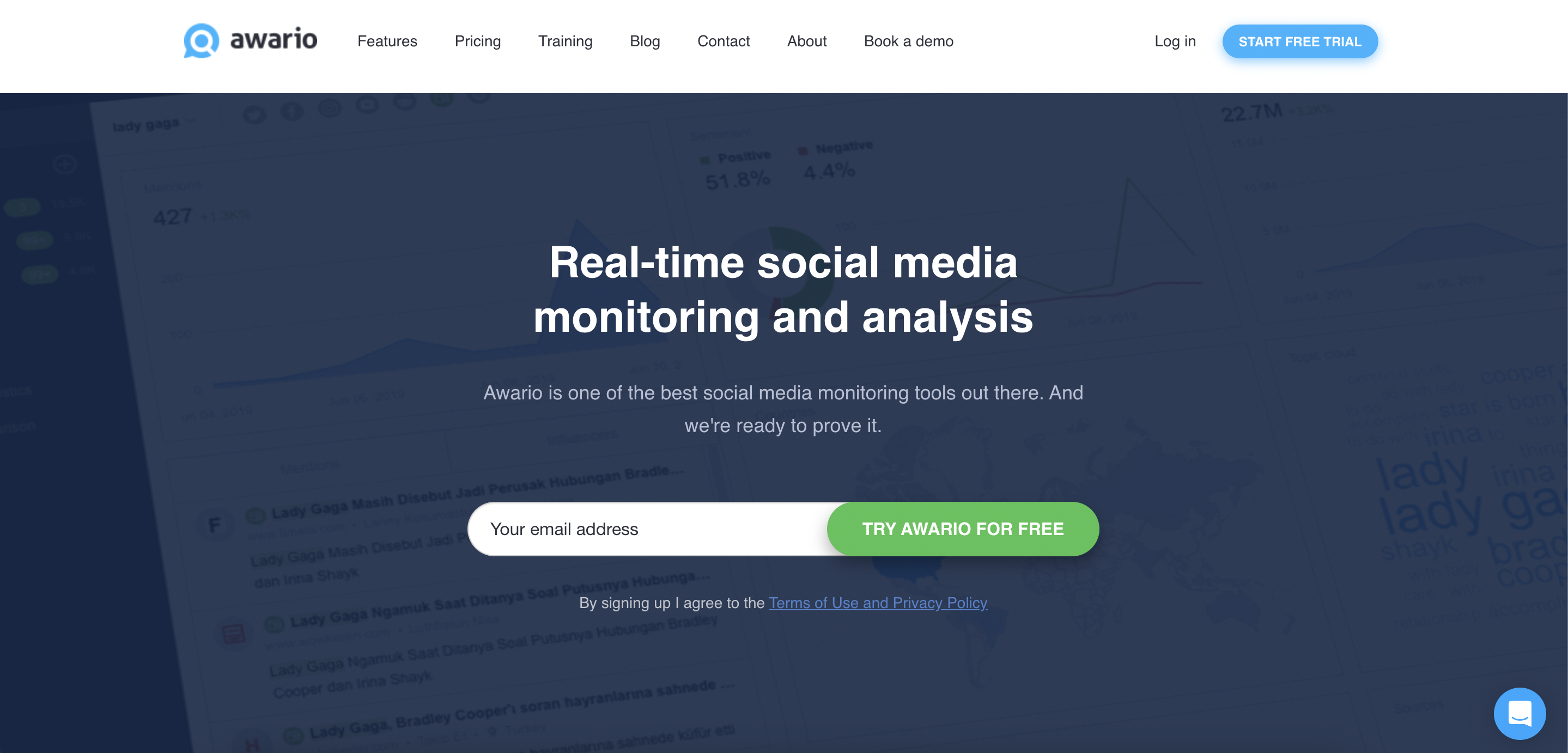
Awario is a budget-friendly social listening platform that still offers plenty of depth. It pulls in mentions from the web and social media in real time, giving you constant visibility into how your brand or keywords are being used online. You can also set up detailed searches using Boolean logic to filter results and track only the mentions that matter most.
Awario includes sentiment detection and influencer tracking, making it easy to understand both what people are saying and who is saying it. It’s a smart option for smaller brands and agencies that need useful data without committing to a large platform.
Key features:
Real-time tracking with advanced custom search filters
Sentiment insights across online and social content
Influencer discovery based on organic activity
How do Instagram tools help brands and agencies?
Track performance across all your content
Instagram analytics tools show how content is performing over time. You can check which Instagram posts are getting the most engagement, how fast your followers are growing, and what time of day works best. These tools are much more detailed than Instagram’s analytics tool and let teams track everything from Stories to Reels to Instagram photos.
Instead of guessing what’s working, teams can look at metrics like reach, impressions, and engagement rate. This helps shape a stronger Instagram strategy and improves the results of future Instagram campaigns.
Over time, this data also shows what types of content actually support growth. That could be professional videos, product tutorials, or even carousel posts that spark conversation. The more consistent your review process becomes, the easier it is to optimise for performance and avoid wasting resources on ideas that don’t land.
Some teams also use Instagram analytics platforms to monitor audience growth across regions, compare performance between campaigns, or test new approaches like reels-first content planning. That kind of flexibility makes these tools a long-term investment, not just a short-term report generator.
Save time by scheduling in advance
Trying to post in real time every day is difficult. With a good Instagram scheduling tool, you can set everything up in advance. That includes Reels, Instagram Stories, carousels, and more.
These tools often come with drag-and-drop calendars, feed previews, and built-in media libraries. This makes it easier to stick to your content plan and keep your Instagram feed looking consistent. Some also help you schedule Instagram posts and even schedule Instagram Stories from a desktop app, so you don’t have to rely only on the mobile app.
You can also assign content to different team members, build out entire campaigns in one sitting, and reuse old posts that performed well. For fast-paced teams or businesses with frequent launches, being able to work ahead is a serious advantage.
In some cases, using a social media scheduling platform also prevents common mistakes, like posting at the wrong time, using the wrong link, or forgetting a first comment. These details matter, especially if you're running promotions, contests, or branded partnerships.
Improve your use of hashtags
Knowing which hashtags to use can make a big difference. The best tools for monitoring hashtags show which ones are performing well, how often they’re used, and what kind of content they appear on. You can also discover new ideas based on current trends.
When you track Instagram hashtags, it becomes easier to plan your captions, spot high-performing topics, and avoid using low-value tags. Hashtag data is especially useful when running influencer campaigns or trying to increase your reach without paid ads.
Some tools can also suggest the best hashtags for your next post, based on content type or theme. Others let you compare the engagement of branded hashtags across multiple social media platforms, giving insight into how different audiences interact with your content.
For creators, hashtags are also useful for getting noticed by potential partners. For marketers, they help with content discovery, benchmarking, and campaign analysis, especially when you're trying to tie results to a specific message or moment.
Run better influencer campaigns
When working with creators, data matters. Using Instagram analytics tools helps teams see how influencer content performs, not just by looking at likes, but by tracking reach, saves, and real engagement.
You can review an influencer’s history, check their audience quality, and spot any signs of fake followers. This leads to more confident decisions about who to partner with and how to structure your influencer marketing plan.
Many tools now include features that allow you to monitor active Instagram campaigns in real time. You can track multiple creators, compare their content, and pull reporting that breaks down performance by account, region, or even caption style.
For teams running frequent influencer campaigns, this kind of insight saves hours and removes guesswork. Instead of relying on screenshots or self-reported results, brands get direct access to post-level metrics tied to campaign goals.
Keep your team organized
Many teams manage more than one Instagram account. A good social media management platform helps everyone stay on the same page. You can assign roles, set approval steps, and see what’s scheduled at a glance.
For agencies, this is especially useful when managing multiple social accounts or brands at once. It also makes it easier to share clean reports with clients, based on real campaign results.
Some of the best Instagram management tools also include internal notes, audit trails, and calendar views. These features support better collaboration, reduce miscommunication, and help teams move faster during busy seasons or product launches.
Using the right platform also keeps your workflows inside one app, instead of juggling spreadsheets, screenshots, and manual reminders across your team.
Get a clearer view of your audience
You can learn a lot from your Instagram analytics. These tools help break down where your audience is based, how they interact with your content, and what they respond to most. Over time, this makes it easier to shape better content and stronger Instagram campaigns.
Some tools also help you compare your results with others in your space. This kind of benchmarking can guide future planning and show where there’s room to grow.
When you're building a strategy for Instagram, having access to this level of data lets you make smarter choices. You can decide what to post more often, what to phase out, and how to tailor your tone to match your audience’s expectations.
You’ll also see shifts in performance early, which helps you adjust before numbers drop. If a certain kind of Instagram photo stops performing, or a format like Reels starts gaining traction, you can pivot quickly and stay ahead of the curve.
Support your wider marketing efforts
Instagram doesn’t work in isolation. It connects to your larger social media marketing plan. The right Instagram analytics apps can link data across platforms and help you see the full impact of your posts.
This also helps teams track how well different types of content are performing, like professional videos, Reels, or user-submitted photos. If your business runs ads or ecommerce campaigns, tracking this data supports better planning.
You can also connect insights across paid and organic content to see what’s really driving performance. For example, if you’re using Instagram ads to push a product launch, post-level metrics will show whether your messaging is landing the way you expected.
Over time, this level of visibility turns Instagram into a proper marketing channel, not just a place to post content.
Make better use of your time
Managing your Instagram business tools from one place saves time. Instead of jumping between different apps, a single platform can help with planning, scheduling, analytics, and reporting.
It also cuts down on busywork. For example, using a social media scheduling platform lets you plan a week’s worth of Instagram posts in one go. Some tools even let you reuse your best content or schedule reposts automatically.
The more structured your workflow becomes, the more time you’ll free up to focus on content quality, community building, and long-term strategy. For small teams, especially, the right tools can create space to grow without adding more hours to the day.
Methodology
We use both manual research and AI tools to evaluate each platform. Our process usually starts with a Google search to find platforms that include the features/tools we are looking for. In this context, it's best tools to stay relevant on Instagram. To expand the search, we also use AI tools like ChatGPT and Perplexity. After gathering a list of recommendations, we take time to review each one. We visit their official websites and, if available, exploring the actual product dashboards to verify the specific function.
We make sure every feature, price point, and product detail is taken directly from official sources. While AI helps improve readability and structure, all facts go through manual verification. The final content reflects human judgment and careful checking.
When we mention research or cite data, it comes from our own surveys or well-established sources like research papers, published studies, and reputable media outlets.
Conclusion
Every team works differently, but the right tools can make a big difference. If you’re looking to improve your results on Instagram, now is a good time to explore what's out there. Try a few of these platforms, see what fits your workflow, and build a setup that helps you stay consistent, informed, and ahead.






